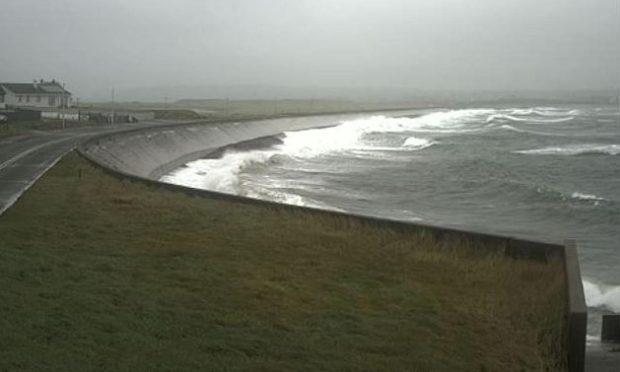Live images of waves washing over a Western Isles causeway are being posted on a website to highlight the dangers of driving in winter weather.
Western Isles Council has decided to place the webcam on the Braighe causeway on Lewis in a bid to highlight the importance of being prepared for rapidly changing road conditions.
Survey work is ongoing to determine the feasibility of similar camera installations at other causeways throughout the Western Isles.
There was a tragedy in South Uist 15 years ago when a wave swept a car into the water, killing three generations of a family.
The MacPherson family – Archie and Murdina MacPherson, their children Andrew and Hannah and grandfather Calum Campbell – died as they drove across a causeway between South Uist and Benbecula.
Coastal areas, and particularly causeways, are vulnerable to waves overtopping under certain tidal conditions and wind direction.
A council spokesman said the Scottish Environmental Protection Agency’s (SEPA) flood alert system was a useful source of information on this subject.
But he added: “As wave overtopping can carry sea and coastal debris with it, police may take the view roads should be closed for safety reasons.
“A camera has recently been installed at the Braighe causeway and live images can be viewed on the council’s website.
“Over the past number of weeks we have experienced heavy/persistent rainfall, gale force winds and high tides, which have resulted in various degrees of travel disruption and difficult driving conditions.
“The first forecasted chilly blast was for early this morning, reminding us that we are in the winter season.”
The Comhairle receives weather warnings from the Met Office, which it shares on social media.
SEPA has also launched a flood warning notification system, targeted at specific areas throughout the Western Isles that is open for all to subscribe, with further details available at www.floodlinescotland.org.uk.
The council spokesman added: “Surface water presents a hazard on roads and can be of unknown depth.
“The Comhairle does work proactively to minimise the effects of heavy or persistent rainfall on the road network, but also relies on landowners to maintain adjacent drainage systems.
“There is also a point at which drainage infrastructure simply does not have the capacity to deal with deluges of rainfall.
“Thankfully these instances are infrequent and, in general, flooding abates relatively quickly.”
